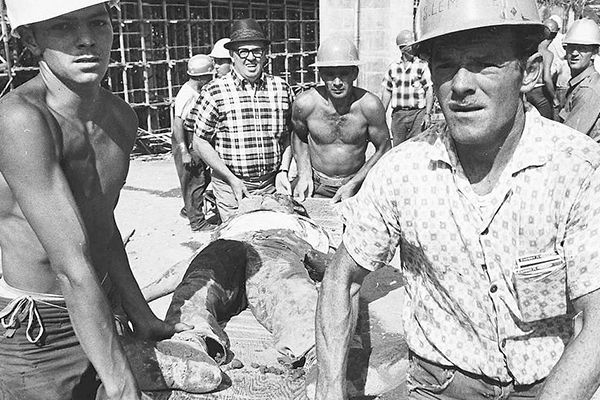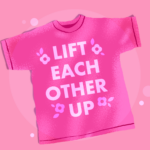
Young Worker? Got Questions? We Have Answers.
We get lots of questions from young workers across the country about their rights at work, working conditions and what unions are and what they do.
We’ve collected 5 of the top questions we get and answered them, below.
- Where can I find information on my rights at work?
- Where can I find information about safety at work?
- What is a union?
- Am I a union member?
- How do I join a union?
Where can I find information on my rights at work?
As a young worker, you are covered by provincial employment standards laws. These set out the basic rules that your employer has to follow in the workplace, including your wages and overtime pay, hours of work, holidays, breaks, whether you have to pay for your own uniform, and other similar matters.
The laws are different in each province and territory, so look for the standards that apply where you live. Click on your province for more information.
Note that if you cross provincial borders for your job (for example, you drive a transport truck), you are likely covered by federal employment standards.
Where can I find information about safety at work?
Did you know young workers are the most likely to be hurt on the job? In fact, young people are most likely to get hurt on the job within 6 months of starting. This is often due to a lack of training, but also to an eagerness to prove ourselves as worthy of a new job.
Don’t let eagerness get in the way of safety. As a young worker, you’re covered by provincial Occupational Health and Safety laws that outline your boss’s responsibilities, and yours, for keeping safe on the job.
We all have four basic rights at work:
- The right to KNOW. You have the right to know about any potential hazards on the job, and to receive training to deal with any hazards, chemicals, machinery, or situations you will encounter on your job.
- The right to REFUSE UNSAFE WORK. Ever been asked to drive a forklift you weren’t trained on? Or to use a chemical you were unfamiliar with? Or to deal with rowdy customers by yourself? You absolutely have the right to refuse work that you feel is unsafe. You also have the right to be assigned to an alternate task until you are safely trained to perform the original job, or until the safety problem is fixed. (Check out this hilarious video on the right and wrong ways to refuse unsafe work.)
- The right to PARTICIPATE. Many workplaces have workplace health & safety committees, who work with the boss to address any safety problems. You have the right to join and participate in a committee like this.
- The right to NO DISCRIMINATION. You can’t be penalized, in any way, for refusing unsafe work, or reporting unsafe working conditions.
What is a union?
Why do we have unions? What do unions do?[[{“fid”:”597″,”view_mode”:”default”,”fields”:{“format”:”default”,”field_file_image_alt_text[und][0][value]”:”apprentice”,”field_file_image_title_text[und][0][value]”:”apprentice”},”type”:”media”,”link_text”:null,”attributes”:{“alt”:”apprentice”,”title”:”apprentice”,”style”:”height: 170px; width: 300px; margin: 4px; border-width: 1px; border-style: solid; float: right;”,”class”:”media-element file-default”}}]]
Negotiating for something with a group behind you is easier than going it alone. A union is a group of workers who have gotten together to bargain with their bosses to improve their working conditions. More technically, a union is a legally recognized group with which an employer is obligated to bargain a contract.
Workers join unions for many reasons. First and foremost, unions give workers a voice on the job and bring more democracy to the workplace. A voice, more democracy – and a collective agreement, or a contract, that outlines wages, hours, holidays, health & dental benefits, and other benefits that members receive.
Union members also bargain for higher wages. Unionized young workers make on average $3.16 more per hour than their non-unionized counterparts.
Am I a union member?
A simple way to know if you’re a union member is to look on your pay stub (that list attached to your pay cheque that shows how much you got paid and what, if any, deductions were made, like taxes and payments to pension and insurance plans.
If you are a union member, you pay union dues. These dues deductions will show up on the deductions side of the list.
Can’t find a paystub? Ask your co-workers, or search online. You may also have a union bulletin board somewhere in your workplace where union notices are posted. If your workplace is unionized, you have to join the union. However, if you are prohibited from joining due to religious obligations, you can instead choose to pay the equivalent of your union dues to a charitable organization. For more information about this, contact your local union.
How do I join a union?
If your workplace doesn’t have a union, and you want to organize one, there is a series of steps you have to take.
- Start by talking with your co-workers to see if they’re interested in getting unionized. The majority of people in your workplace have to agree to form a union – and this often takes a few conversations with people and explaining why you want to unionize.
- Next, contact a union who represents members in the field (or sector) where you work. From there you will start a union drive – where you and your co-workers sign union cards stating your intent to form a union.
- Next, depending on the province where you live, you may have to have a vote to complete the process.
Want more information on the way to join a union in your province? Check out this great guide from the United Food and Commercial Workers union.
Have another question? Ask us at youngworkers@clc-ctc.ca






